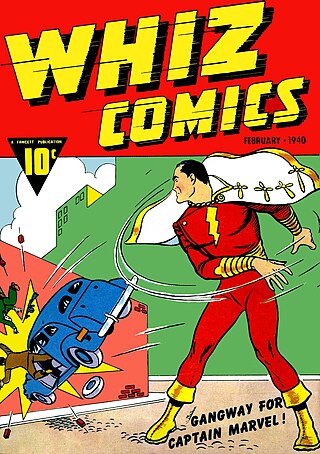
A superhero or superheroine is a stock character that typically possesses superpowers, abilities beyond those of ordinary people, and fits the role of the hero, typically using his or her powers to help the world become a better place, or dedicating themselves to protecting the public and fighting crime. Superhero fiction is the genre of fiction that is centered on such characters, especially, since the 1930s, in American comic books, as well as in Japanese media.

Charles Clarence Beck was an American cartoonist and comic book artist, best known for his work on Captain Marvel at Fawcett Comics and DC Comics.
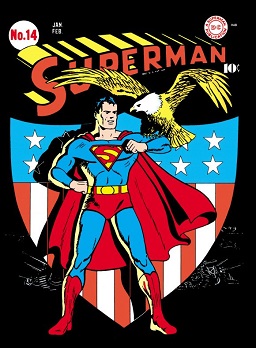
The Golden Age of Comic Books describes an era of American comic books from 1938 to 1956. During this time, modern comic books were first published and rapidly increased in popularity. The superhero archetype was created and many well-known characters were introduced, including Superman, Batman, Robin, Captain Marvel, Captain America, and Wonder Woman.
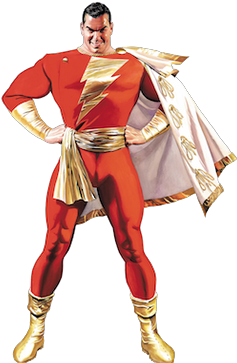
Captain Marvel, also known as Shazam and the Captain, is a superhero in American comic books originally published by Fawcett Comics and currently published by DC Comics. Artist C. C. Beck and writer Bill Parker created the character in 1939. Captain Marvel first appeared in Whiz Comics #2, published by Fawcett Comics. He is the alter ego of Billy Batson a boy who, by speaking the magic word "Shazam!", can transform himself into a costumed adult with the powers of superhuman strength, speed, flight, and other abilities. The character battles an extensive rogues' gallery, most of them working in tandem as the Monster Society of Evil, including primary archenemies Black Adam, Doctor Sivana and Mister Mind. Billy often shares his powers with other children, primarily his sister Mary Batson and their best friend/foster brother Freddy Freeman, who also transform into superheroes and fight crime with Billy as members of the Marvel Family, also known as the Shazam Family.

Miss America is a superhero appearing in American comic books published by Marvel Comics. Created by writer Otto Binder and artist Al Gabriele, the character first appeared in Marvel Mystery Comics #49 in the Golden Age of Comic Books. Madeline Joyce is the first incarnation of Miss America. The character has also been a member of the Invaders and Liberty Legion at various points in her history.

Bulletman and Bulletgirl are fictional superheros originally published by Fawcett Comics.
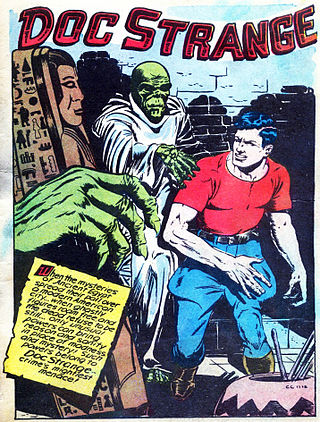
Doc Strange is a Golden Age comic book superhero who originally appeared in Thrilling Comics #1 in February 1940. The character continued in Thrilling Comics until issue #64. He also appeared in America's Best Comics #1-23 and 27.

Hoppy the Marvel Bunny is a fictional comic book superhero and anthropomorphic animal originally published by Fawcett Comics as a spin-off of Captain Marvel. He was created by Chad Grothkopf (1914–2005), and debuted in Fawcett's Funny Animals #1. Hoppy later became a property of DC Comics, and has made periodic appearances in stories related to Captain Marvel, today also known as Shazam or The Captain.

Otto Oscar Binder was an American author of science fiction and non-fiction books and stories, and comic books. He is best known as the co-creator of Supergirl and for his many scripts for Captain Marvel Adventures and other stories involving the entire superhero Marvel Family. He was prolific in the comic book field and is credited with writing over 4,400 stories across a variety of publishers under his own name, as well as more than 160 stories under the pen-name Eando Binder.

The All-Winners Squad is a fictional superhero team appearing in American comic books published by Marvel Comics. The company's first such team, it first appeared in All Winners Comics #19, published by Marvel predecessor Timely Comics during the period fans and historians call the Golden Age of Comic Books.

Daredevil is a fictional superhero created by Jack Binder, who starred in comics from Lev Gleason Publications during the 1930s–1940s period historians and fans call the Golden Age of comic books before being retroactively established into the Image Universe by Image Comics in the 1990s as its first character. The character is unrelated to Marvel Comics' Daredevil.
Thunderbunny is a comic book about a boy who transforms into a superhero resembling a large pink humanoid rabbit. It was created by Martin Greim.
Hydroman is a fictional superhero character who first appeared in comic books from Eastern Color Printing in 1940.
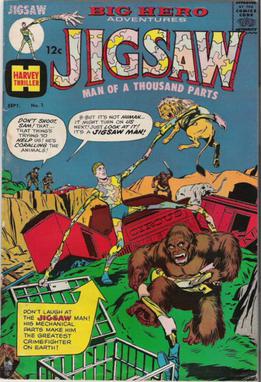
Jigsaw was a Joe Simon-created character and two-issue comic series published by Harvey Comics from September to December 1966.

Shock Gibson is a fictional comic book superhero who first appeared in Speed Comics #1, from Brookwood Publications. He was created by artist Maurice Scott, who drew it through issue #11, and an unknown writer. His 1939 introduction makes him one of comic books' earliest superheroes. He also appeared in All-New Comics #8.

Pyroman is a fictional superhero that appeared in comic books published by Nedor Comics. His first appearance was in Startling Comics #18, with art by Jack Binder. This character was later revived by both AC Comics and America's Best Comics.

Superhero fiction is a genre of speculative fiction examining the adventures, personalities and ethics of costumed crime fighters known as superheroes, who often possess superhuman powers and battle similarly powered criminals known as supervillains. The genre primarily falls between hard fantasy and soft science fiction spectrum of scientific realism. It is most commonly associated with American comic books, though it has expanded into other media through adaptations and original works.
Mr. Scarlet and Pinky the Whiz Kid are two duo fictional comic book superheroes connected to each other, and first introduced in Wow Comics. The superheroes were originally published by Fawcett Comics and later by DC Comics. The original Mister Scarlet was Brian Butler debuting in Wow Comics #1, and was created by France Herron and Jack Kirby while Pinky Butler became his sidekick, Pinky the Whiz Kid. After Brian's death, Pinky takes over the role as Mr. Scarlet in DC's continuity. Pinky Butler premiered in the fourth issue of Wow Comics and was created by Otto Binder and Jack Binder.
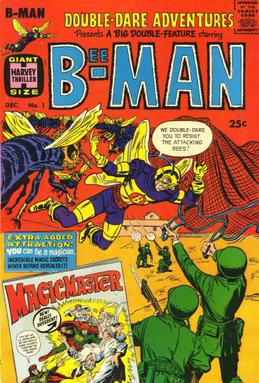
Bee-Man is a fictional supervillain turned superhero in comic books published by Harvey Comics, who briefly appeared during the period historians and fans call the Silver Age of Comic Books. He was created by artist/writer/editor Joe Simon, writer Otto Binder and artist Bill Draut.
















